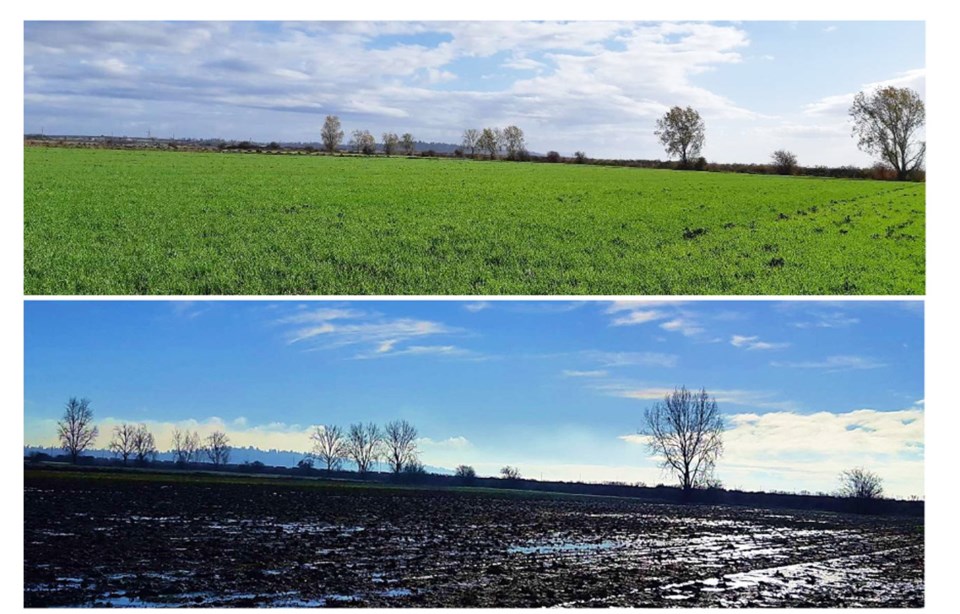The Delta Farmland and Wildlife Trust’s winter cover crop program continues to prove its value.
Program director Drew Bondar recently told Delta’s Agricultural Advisory Committee that the DFWT has wrapped up two years of surveys of winter cover crops on approximately 130 fields.
He noted that by March 2021, 60 per cent of the fields had been grazed down to the soil surface with only 21 fields showing no evidence of grazing.
Waterfowl surveys of farms in South Delta and Richmond also indicated that cover crops are being utilized extensively.
The DFWT’s report, Vegetation Surveys of Winter Cover Crop Fields over the 2020 - 21 Winter Season, concluded the results support the high value of winter cover crop fields to overwintering waterfowl in the Fraser River delta.
Winter cover crop fields were planted with either spring cereals, winter cereal or a novel crop mixture.
High levels of grazing were evident throughout Delta and south Richmond and across all types of fields.
Grazing activity was moderate in December 2020 but increased dramatically by March 2021, the report found.
Established in the early 1990s by local farmers and conservationists to conserve agricultural and wildlife resources within the Fraser River delta, the DFWT promotes the preservation of farmland and associated wildlife habitat through sustainable farming and land stewardship, one of the few programs of its kind in the country.
The Trust administers stewardship programs that are made available to local farmers.
Under these programs, the DFWT shares the cost of management practices contributing to soil and/or wildlife habitat conservation and enhancement.
In the 2019/20 fiscal year, City of Delta funds, combined with other funding sources, facilitated the planting of approximately 1,018 hectares (2,516 acres) of winter cover crops, approximately 180.5 hectares (446 acres) of grassland set-asides and approximately 198 hectares (489 acres) of forage enhancement lands.
The Trust also continues to refine its programs through ongoing research to ensure the maximum possible benefit for both the farming community and wildlife.
The Trust is also scheduled to make a presentation to council on the organization's activities over the past year and its latest funding request.



